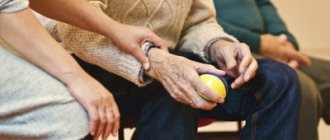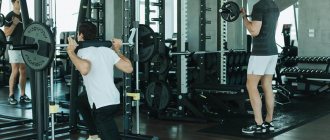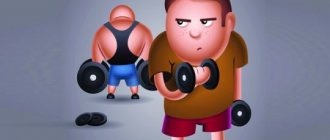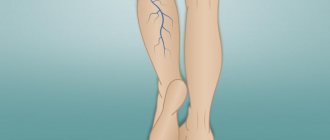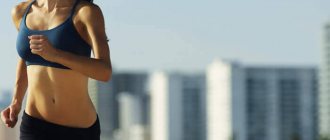Few people have heard of this type of fitness as gliding, unfortunately. For those who like to try new directions, change the usual load for something extraordinary, there is a workout whose main task is gliding. Sounds intriguing? How does gliding affect physical fitness if it is more like entertainment? In fact, this area is part of functional training and an excellent way to improve the body.
What are fitness sliders?
Sliders are synthetic discs that provide natural gliding over the floor surface; of course, carpet is not suitable for training. There is nothing supernatural in the material and, in fact, in the discs, but the effectiveness of training has been proven; gliding helps improve coordination, increase muscle tone, endurance, improve balance, and flexibility. Despite the simplicity of the idea, the disks work. Although household equipment can include disposable paper plates, small kitchen towels, and even socks.
The original Gliding discs are 22 cm in diameter and 1 cm in height.
Gliding as a form of fitness
This training is conducted in a fitness format and is mainly a group activity. Gliding naturally uses special discs. The training takes place under energetic music, warm-up and cool-down are carried out as standard for fitness areas.
This system, including Gliding discs, was developed and patented by Mindy Milray, who spent several years researching her findings and successfully brought the invention to the masses.
Mindy Mylrea
Pros and cons of gliding training
Pros and benefits of training with discs:
- When sliding on discs, small and deep muscles of the body are activated, which stabilize the musculoskeletal system, improve posture, and the health of the spine and other joints.
- Training allows you to burn a lot of calories and helps to lose weight, strengthen the cardiovascular system, and increase endurance.
- During training, the joints are not exposed to shock loads.
- The muscles become more defined and the silhouette becomes sportier.
- Gliding replaces functional types of training with strength equipment, but is not inferior in effectiveness.
- It is possible to practice at home, the discs weigh almost nothing, and you can also find budget options.
Pros and cons:
- Training does not help increase muscle size and develop strength.
- There are contraindications.
- Failure to follow safety precautions and loss of balance can result in injury.
- Not suitable for beginners; gliding is recommended only for physically fit people.
About gliding training
Some of us, for some reason, prefer working out at home to the gym. Unfortunately, the lack of free space and the lack of special equipment impose some restrictions, depriving the training of the desired variety. Monotonous push-ups, squats and bends quickly become boring, and exercise ceases to bring joy. This means they become less effective. However, there is a way to give boring exercises a new sound. And for this it is not at all necessary to leave your own apartment. A fitness program called “Gliding” will come to the rescue. Gliding is a new and very unusual fitness trend for Russia. But in its homeland in the USA it is extremely popular. The author of the technique is 53-year-old Mindy Mulray, a fitness guru and international class presenter.
So what are the specifics of the training? The fact is that it is based on the use of special fitness discs and gliding. The glidings are made of synthetic material, their thickness is 10 mm, and their diameter is 22 cm. A pair of such discs is enough for training. This simple device significantly increases the effectiveness of training and allows you to endlessly modify your usual exercises. You just need to place the gliding under your feet or palms. All exercises are performed sliding. This means that it is necessary to control the position of the discs every second and maintain balance. Thus, the abdominal muscles, back muscles and deep stabilizer muscles are constantly involved in the work. Gliding makes it possible to make movements along a variety of trajectories, thereby using smaller muscle groups. As a result, you will be able to effectively work out all problem areas, tone your abdominal muscles, improve your posture, develop coordination and the vestibular system. This workout has virtually no contraindications. The use of discs reduces the force of gravity acting on the body and does not involve jumping or sudden movements. This means that neither problems with the joints or spine, nor varicose veins will become an obstacle to exercise. Working with gliding is very simple. The main thing is to take the correct starting position. Half of the foot is placed on the disc, the heel is on the floor. To make a movement, you need to lift your heel, lean on your toe and, pushing off slightly, slide in the desired direction. By the way, the material from which the glidings are made allows them to move freely on any surface: from laminate to carpet. For a successful workout, you only need a couple of discs, 1.5 meters of free space around and a little imagination. Any known exercise can be modified and complicated with the help of gliding. For starters, we offer a simple but very effective complex: 1. Lunges. For the muscles of the thighs and buttocks. Straighten up, place your feet on the gliders, hip-width apart. Slide your right leg backwards so that your left thigh is parallel to the floor. Return to the starting position and repeat on the other leg. 2. Twisting. For the abdominal muscles. Sit on the floor, bend your knees, place your heels on the gliders. Your arms are extended in front of you. Slowly lower your body back so that your lower back is on the floor. Straighten both legs at the same time, keeping your knees slightly bent. Return to the starting position. 3. "Swimming." For the back muscles. Lie on your stomach, straighten your legs and extend your arms forward. Place your fingers on the glidings. Lifting your chest and shoulders off the floor, spread your arms to the sides, describing them in a semicircle, as if you were swimming, squeeze your shoulder blades together and, bending your elbows, pull them towards your body. Straighten your arms forward, return to the starting position. 4. Push-ups. For the muscles of the arms and chest. Get into a push-up position on your knees. Palms on gliding shoulder-width apart. Bend your elbows to perform a push-up while moving your gliding arms out to the sides. Return to the starting position. To achieve the best effect, each exercise should be performed in 2-3 sets of 16 times. And at first, fitness discs can be easily replaced with ordinary paper plates.
Examples of exercises with pictures =))
I.p. Stand straight, arms along your body, feet on gliding.
Bend your knees as if you want to sit on a chair. At the same time, push the left one to the side, move it back, as if you were drawing a circle, and return to the first position. Repeat this exercise with your right leg. Perform 3 times for 10 approaches.
I.p. Sit on your knees, hands shoulder-width apart on glides.
Slowly slide forward on your hands. Keep your back straight, do not lift your knees off the floor.
Hold this pose for 3 seconds. Then slowly return to the position. Repeat 3 times for 8-10 approaches.
I.p. lie on your back, bend your knees, gliding under each foot. Place your hands under your head.
Slowly raise your body, tensing your abdominal muscles, while simultaneously pulling your left leg towards your chest. Return to i.p. Repeat for the other leg.
Repeat 3 times for 8-10 approaches.
Top 15 Exercises with Sliding Discs
Back Lunges with Knee Raises
They are performed standing on disks; when lunging backwards, the feet do not leave the floor, but at the moment of extension of the body, you need to raise the knee up and return the foot to the disk. Performed first on one side, then on the other.
Cross lunges or curtsies
They are performed along the usual trajectory, but the feet should not leave the floor when moving diagonally. The movements are performed alternately on each leg. It is important to keep your balance and not move your foot too far.
Sliding to the sides alternately
They are performed while standing and resemble skiing. The movement is performed alternately. Each leg slides to the side with the knee straight while the supporting leg is slightly bent. This is followed by a slide with the second leg.
Forearm plank slide
In this case, the discs are under the feet and the forearms are on the floor. Using the strength of the core muscles, maintaining a horizontal position, the body is pushed back, while the shoulders move back relative to the elbows. Then use your abdominal muscles to pull your torso back to the starting position, sliding your feet along the floor.
Push-ups with knee pulled to opposite elbow
The discs are located under the feet. Taking a prone position, bend your elbows and lower your chest as low as possible. As you exhale, straighten your elbows and pull your knee, sliding along the floor, to the opposite elbow and return it back. This is followed again by a push-up and sliding of the other leg to the elbow of the opposite arm.
Heel Pull + Glute Bridge with Knee Extension
Performed as follows: lying down, heels on discs, pull your heels towards your buttocks, then lift your pelvis into the gluteal bridge. Pausing at the top point, straighten your knees without lowering your pelvis. As a result, the pelvis lowers naturally along with the spine. The combination is repeated several times.
Slide one arm forward and to the side in plank
Here the discs are already located under the palms. Standing in a plank position, your core muscles are tense, keeping your torso in a straight line. Slide one hand forward without lifting your palm from the floor, then return it under your shoulder and also move it to the side, and return your hand to its original position. Perform the same movements on the other side. To complicate the technique, you can hold one leg in a canopy, alternating after a certain time.
Slide hands forward in plank
Reminiscent of doing an exercise with an ab roller, only instead of a roller there are sliding discs. Place your feet the width of your pelvis, keep your torso horizontal without sagging in the lumbar region. Place your palms exactly under your shoulder joints. As you exhale, begin to slide your arms forward, moving them away from your body, thereby approaching the floor surface. As you exhale, use your abdominal muscles to tighten your arms and return to the starting position.
Plyometric push-ups with side jumps
Feet on the glides. They are performed like this: the hands and feet are located approximately the same width - along the shoulders. Perform push-ups with a narrow stance, then explosively lift your palms off the floor into a wide stance while keeping your feet roughly the same width apart, sliding on the plates. Also do push-ups in a wide position and, lifting your arms, return your palms to a narrow position at the same time as your legs.
Burpee
The option is performed without push-ups, the discs are located under the feet. Stand straight, squat like a burpee, placing your palms on the floor, and slide your feet back into a plank without lifting your feet from the floor. Then slide your legs back toward your palms and jump up to the starting position. Repeat the combination.
Plank running
The option can be performed both on two and on one hand - an advanced version. Discs under the feet. Standing on straight arms, palms under your shoulders, maintain a level plank position. Start sliding your legs, bringing your knees to your chest alternately and quickly changing positions. Don't lift your feet off the floor.
Pistol squats
Performed using one disk. The supporting foot stands confidently on the floor, the second leg must be placed on the heel on top of the disc. As you inhale, squat down, sliding your front leg forward, then push off with your supporting leg and rise up as you exhale. Repeat several times on one leg, then switch.
Leg abduction in plank to the sides
Standing in a plank position with straight arms, discs under your feet, alternately abduct your straight legs to the sides and, accordingly, return to the starting position. Do it at an accelerated pace.
Walking on your hands
Standing in a plank position with straight arms, feet on discs, walk your hands forward as far as the room allows, perform for quantity or time.
Jumping push-ups, knees to chest
With your feet on the discs, do push-ups and with a sliding movement, pull your knees to your chest, simulating a jump, and return to the plank again. Then do push-ups again.
Exercises with gliding discs
Basic rules for training:
- Ensure there is free space, at least 1.5 m in all directions.
- At first, use some kind of support to maintain your balance.
- Always warm up before starting a class. Stretch your muscles before finishing.
- Exercises should be performed for time (30-40 seconds per exercise) or for quantity (10-15 per side). 2-3 approaches will be enough.
- The weekly norm is 2 or 3 times for half an hour. You can combine gliding exercises with your workouts if your schedule includes other sports activities.
Gliding exercises for thighs and buttocks
1. Sliding side lunges
We shift the body weight to the right leg, and place the toe of the left foot on the disc. Make a slow lateral movement with your left leg. We press our bent arms to our body and move them as if we were skating. Repeat about 20 times for both legs.
Gliding is based on the principle of sliding, which allows you to increase the effectiveness of conventional exercises several times.
2. Smooth lunges back
We stand straight, place our hands on our hips, place our feet shoulder-width apart, and stand on the disk with the toe of our right foot. We make a sliding movement with the leg with the disk backward until the knee touches the floor. Keep your back straight, at the end of the movement both legs should be bent at an angle of 90 degrees.
For gliding training, small synthetic discs are used that ensure gliding with the surface.
3. Sliding heels
The exercise is performed lying on your back. We stretch our arms along the body, bend our legs at the knees, place our heels on the discs. Lift your hips up, while tensing your buttock muscles (a straight line should form from your knees to your shoulders). Then slowly push the discs with your feet, moving them slightly apart. Also slowly return to the starting position.
By overcoming the force of friction with the surface, your muscles receive additional load along the entire trajectory of movement.
Gliding exercises for the stomach and back
1. Plank
We place our feet on the plates and imitate running, remaining in the plank position, leaning on our knees, while the buttocks remain in place. We do it 10-15 times. It may seem that this exercise is useless, but this is not so, because not only the abdominal and back muscles are involved, but also the buttocks.
Gliding training will help you work on problem areas.
2. Irka
It can also be done with a plank pose - we tighten our legs and return to the starting position. It is necessary to start movements with a small amplitude, gradually developing it. This is one of the most difficult exercises and requires considerable effort. If at first you don’t succeed, you can use a regular chair as a training device, which will protect you. We do the movement 10-15 times.
Due to the additional resistance with the surface when sliding, you get a higher load on the muscles.
3. Raising the body with your hands
We begin the exercise by lying on our back. We place our hands on the discs, spread them apart, and stretch our legs forward. Raising the body, we rely on our hands, which slide. In this case, the palms should be strictly pressed to the floor, and the back should remain straight. We do it 15 times.
Exercises with gliding discs involve a low-impact load, which is safe for the musculoskeletal system.
Gliding exercises for arms and shoulders
1. Push-ups
Get into a push-up position with your knees on the floor. Place your hands on the gliders, shoulder-width apart, with your elbows bent. We perform push-ups, while moving the gliders to the sides. The best effect can be achieved by doing each exercise 10 times in several approaches.
Gliding discs are very compact equipment that does not take up much space in the room and is easy to take with you on a trip.
2. Swimming
We lie on our stomachs, face down, with our legs extended shoulder-width apart, our toes are on the floor, our arms are extended forward with our palms and placed on the discs. We try to lift our chest off the floor as much as possible using our back, while at the same time making a circular movement with our hands, imitating breaststroke swimming. After the hands slide forward, we lower the body to its original position. Repeat about 10 times.
3. Push-ups with sliding hands
We again take a push-up position, resting our palms on the discs. We begin to do push-ups, at this time one arm bends and moves a little back, while the other slides forward. If you are unaccustomed to doing the exercise, it may seem difficult, so at first you can rest your knees on the floor. We also repeat 10 times, changing hands.
When performing sliding exercises, the core muscles are involved, which will not only give additional stress to the abdominal and back muscles to improve the figure, but will also help strengthen the spine and improve posture.
Recommendations for gliding training
It is important to note that even home workouts with discs should be done in sneakers for better support of the feet, otherwise there is a risk of pain or injury.
- Perform 15-25 repetitions or spend 30-60 seconds on each exercise.
- Don't forget to warm up before the complex.
- After training, be sure to stretch your muscles.
- Each exercise should be performed in 3 sets, so it is better to perform the complex in a circle to reduce rest time. Rest 2-3 minutes between cycles.
- Train no more than three times a week.
What is gliding?
Gliding (from the English glide - sliding) is developed on the principle of the absence of shock loads during the training process: without running or jumping. The exercises are performed with sliding movements of the legs and arms due to support on special equipment - synthetic discs (Gliding) or on any other available analogue that ensures gliding over the surface. During the training process, the muscles of the arms, legs, and buttocks receive a load along the entire trajectory of movement, also using the muscular corset of the abdomen and back to maintain balance. Due to this, gliding is considered one of the most effective exercises for strengthening muscles, as well as reducing body weight.
Benefits of gliding training:
- They work on problem areas (abdomen, sides, waist, arms, back) without forceful loads with heavy weights;
- Due to additional resistance during sliding, they increase the load on the muscles when performing standard exercises (lunges, squats, burpees);
- Safe for the musculoskeletal system;
- Available to anyone, since the exercises can be performed using any towel sliding across the floor;
- Strengthens the spine, improves posture;
- Makes joints mobile and elastic;
- Improve coordination and help maintain body balance.
Rules for performing movements:
- Always start any workout with a warm-up and end with stretching exercises.
- At first, use additional support to maintain balance: a stool, chair, bed.
- You will need free space on the floor and any synthetic fabric or special gliding discs.
- Perform a set of exercises for speed (30-40 seconds each) or for the number of repetitions (at least 10).
- Perform each exercise for 2-4 approaches.
- Conduct training at least 2 times a week, with a total duration of at least 30-40 minutes.
- If you play other sports, add gliding to your standard workout routine.
To ensure that the body quickly recovers after training, excess weight goes away, and muscles become stronger, enrich your diet with foods rich in protein and vitamins. Herbalife Formula 1 Protein Shake contains 17 grams of protein per serving, including soy protein, and provides the body with complete nutrition: includes a complex of 23 essential vitamins, minerals, as well as antioxidants and fiber. Remember that 80% of success in working towards your dream body depends on what you eat, and only 20% on exercise. Combine a balanced diet and an active lifestyle and within a month you will notice positive changes.
Find out how to eat a balanced diet and control your weightLearn more May 24, 2020, 07:382019-05-24
Author: Be in Shape
Rate the material!
Add a review
How to choose gliding discs
Slides come in various shapes - round, oval, and even triangular. It is best to choose round ones, they are more versatile. As for the quality of materials, it all depends on the manufacturer and the price of the product. Of course, original discs are practical, but this does not mean that analogues can last less. In addition, you can use improvised materials, just change them more often.
Top 5 manufacturers of gliding discs
- Gliding
- LiveUp.
- OSPORT.
- Atletica 24.
- Sportagen.


